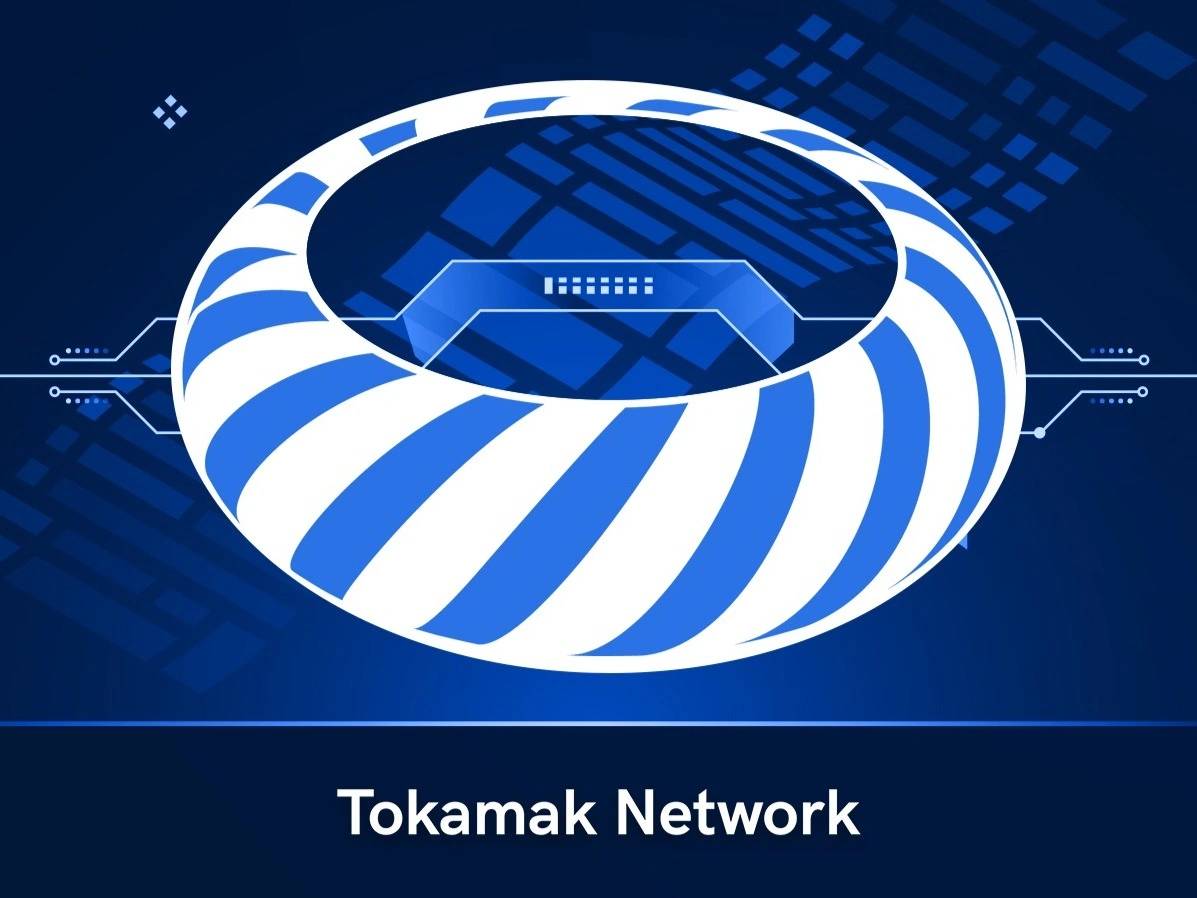订阅 wiki
Share wiki
Bookmark
Tokamak Network
Tokamak Network
Tokamak Network 是一个 区块链 协议,为开发者提供基础设施,以便在 以太坊 区块链 上创建和部署定制的 Layer 2 (L2) 网络。该项目的核心产品是“L2 On-Demand”,这是一个旨在简化特定应用 L2 解决方案启动的框架。该网络的原生实用和 治理代币 是 TON。 [1]
概述
Tokamak Network 将自身定位为一个以开发者为中心的生态系统,旨在解决 以太坊 的可扩展性挑战。该协议支持创建定制的 L2 链,这些链可以针对特定用例进行优化,例如 去中心化金融 (DeFi)、游戏或以隐私为中心的应用程序。通过提供灵活且易于访问的 L2 框架,该项目旨在降低开发者构建可扩展 区块链 应用程序的门槛,而不会受到 以太坊 主网 的高交易费用和有限吞吐量的限制。 [1] [2]
该项目的理念以协作为中心,并为更广泛的 区块链 社区提供基础架构。它通过赠款计划、技术文档和开源代码存储库为建设者提供支持。最初,该网络的设计基于 Plasma,这是一种 Layer 2 扩展技术,引起了以太坊研究社区的关注。
随着时间的推移,该项目发展了其战略,成为一个更全面的“按需 Layer 2 平台”,整合了各种扩展解决方案,包括零知识证明,以服务于更广泛的 DApp 和 DeFi 提供商。治理通过 去中心化自治组织 (DAO) 进行管理,并计划进一步将控制权下放给 TON 代币持有者。 [1] [2]
历史
Tokamak Network 的公开亮相始于 2017 年 8 月左右,即其官方 X(前身为 Twitter)帐户创建的月份。到 2020 年年中,该项目积极与社区讨论 以太坊 可扩展性的话题。2020 年 7 月,它分享了由一个名为 Onther 的关联实体准备的关于 Layer 2 解决方案的教育内容。次月,该网络宣布与 加密货币 交易所 Upbit Indonesia 合作,对其原生代币进行价格调查。 [2]
2020 年 11 月 12 日发生了一项重大的战略转变,当时该项目宣布它将“重生为一个按需 Layer 2 平台”。这一转变将其范围从特定的 L2 实施扩大到一个多功能的平台,为 DApp 和 DeFi 服务提供商提供各种扩展解决方案。
正如首席执行官 Kevin Jeong 在 2021 年初所说,这一新方向以“合作而非竞争”的理念为指导。该项目的技术贡献于 2021 年 1 月 27 日获得了 PANews 组织的“PARTY Award 2020”上的“最佳技术创新奖”。 [2]
到 2025 年,该网络在其技术路线图上取得了重大进展。2025 年 9 月,它发起了一项 空投 活动,以激励用户测试其零知识证明 (ZKP) 技术,并发表文章详细介绍了其 zk-EVM 开发。2025 年 10 月 14 日,Tokamak Rollup Hub 的更新表明该平台正在进入其最终发布阶段。该更新还确认了 Cross-Trade DApp 的完成,并且其分布式随机信标 (DRB) 的安全审计已接近完成。 [1]
技术
Tokamak Network 的架构由多个协议和功能组成,旨在提供一套全面的工具,用于构建和保护 Layer 2 网络。
L2 基础设施和可扩展性
该网络的核心是其灵活的基础设施,支持各种 L2 解决方案的部署。
- Rollup Hub:这是一个中心平台,开发者可以在其中部署专门的、特定于应用程序的 L2。它旨在支持不同类型的 Rollup,允许针对不同目的(如游戏或隐私)优化的链。 [1]
- zk-EVM(零知识以太坊虚拟机):该网络正在开发一个 zk-EVM,重点是可访问性。既定目标是降低成为证明者的硬件要求,这将简化启动新的基于 zk 的 L2 网络的过程,并鼓励更广泛地参与保护它们。 [1]
- L2 的 Blob 共享:这是一种提议的机制,旨在降低 Rollup 的数据可用性成本。它的运作方式是允许生态系统内的不同 L2 网络进行协作,并分担与将数据发布到 以太坊 主网 相关的成本。 [1]
- 跨链交换:正在开发一个系统,以促进不同链之间的资产交换。该协议旨在完全依赖底层 L1(以太坊)和各自 L2 的安全性,从而避免了对第三方共识机制或可能引入额外安全风险的白名单桥的需求。 [1]
- Plasma:在其早期阶段,该项目利用 Plasma,这是一种 Layer 2 扩展技术,可在链下处理交易。这种最初的设计受到了 以太坊 联合创始人 Vitalik Buterin 的高度赞扬,因为它采用了创新方法。 [2]
安全性、可靠性和身份
为了确保在其平台上构建的 L2 网络的完整性,Tokamak 开发了几个以安全为中心的组件。
- L2 Watchtower:这是一种安全机制,用于监控 L2 网络中运营商的恶意或错误活动。它利用 质押 和挑战系统,参与者质押 TON 代币以充当“瞭望塔”。如果瞭望塔检测到无效的状态转换,它可以发出挑战以防止欺诈活动并可能获得奖励。 [1]
- 可验证的随机性:该项目正在开发一种最小的分布式随机性协议,并计划将其作为开源软件发布。该协议旨在提供可靠且可验证的链上随机性来源,这是游戏、彩票和 NFT 铸造等应用程序的关键组件。 [1]
- Sybil 抵抗:一项旨在创建身份证明算法和用于用户识别的专用 zk-rollup 网络的计划正在进行中。该系统的目标是防止 Sybil 攻击,即单个恶意行为者创建大量虚假身份以不正当地影响网络或应用程序。 [1]
代币经济学
Tokamak Network 的原生代币是 TON。它充当网络运营的 实用代币 和项目 DAO 的 治理代币。TON 的主要用途是在 L2 Watchtower 系统中进行 质押,参与者锁定代币以帮助保护网络。该代币还用于参与治理提案并投票决定协议的未来方向。
为了扩展质押 TON 的效用,该项目推出了 GemSton,这是一项将 非同质化代币 (NFT) 链接到质押头寸的计划,增加了游戏化元素和参与层。 [1]
供应和分配
截至 2025 年 10 月 15 日,该代币的供应和分配指标如下:
- 总供应量: 97,699,198.197 TON
- 流通供应量: 54,047,105.101 TON
- 销毁供应量: 2,078,056.856 TON
- 质押代币: 26,194,083.028 TON
- DAO 金库: 17,458,010.068 TON
这些数字反映了代币供应量的很大 一部分 正在积极用于 质押 或保存在 DAO 金库中,用于生态系统资助和治理目的。 [1]
治理
Tokamak Network 由 去中心化自治组织 (DAO) 治理,该组织允许 TON 代币持有者参与决策过程。该项目已宣布计划更新其治理模型,以进一步加强去中心化。拟议的变更包括删除现有的三名成员组成的 DAO 委员会结构,并实施安全委员会。此过渡旨在让 TON 代币持有者在治理中拥有更直接的控制权和自由,从而使项目朝着更社区驱动的模式发展。DAO 金库中持有的资金根据生态系统开发、赠款和其他计划的治理提案进行分配。 [1]
奖项和认可
2021 年 1 月,Tokamak Network 在 PANews 主办的“PARTY Award 2020”上获得了“最佳技术创新奖”,PANews 是一家专注于亚洲 区块链 行业的新闻媒体。 [2]
该项目早期的技术设计也获得了 以太坊 联合创始人 Vitalik Buterin 的显着认可。在项目分享的评论中,Buterin 赞扬了其 Plasma 技术的实施,并表示:
“我对他们所做的具体设计印象深刻,即使是我们自己的 plasma 研究人员也从未考虑过。” [2]
团队
该项目由首席执行官 Kevin Jeong 领导,他公开阐述了该网络的愿景和协作理念。一个名为 Onther 的实体至少自 2020 年以来就与该项目相关联,并被认为准备了技术和教育内容,这表明它可能是 Tokamak Network 背后的核心开发团队或母公司。 [2] [3]
发现错误了吗?
